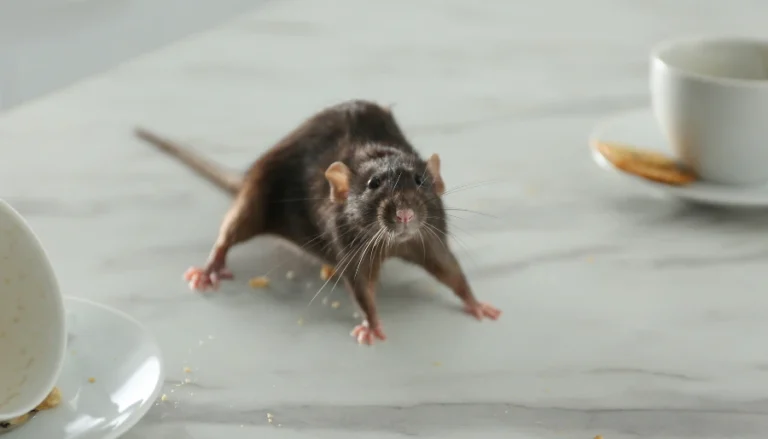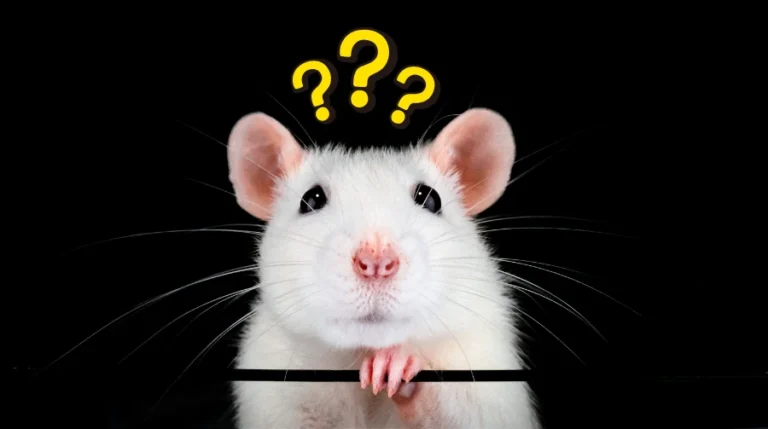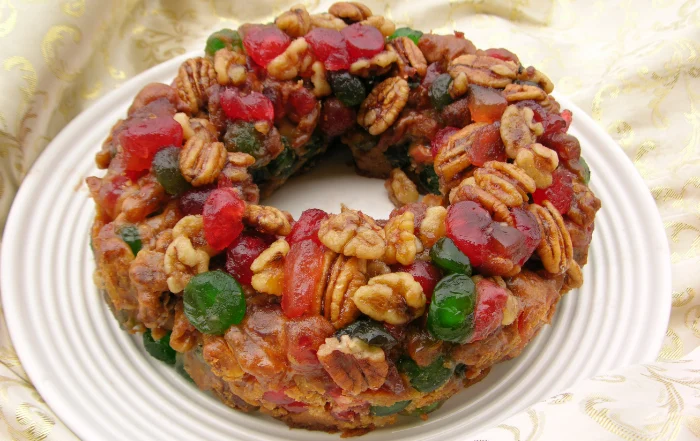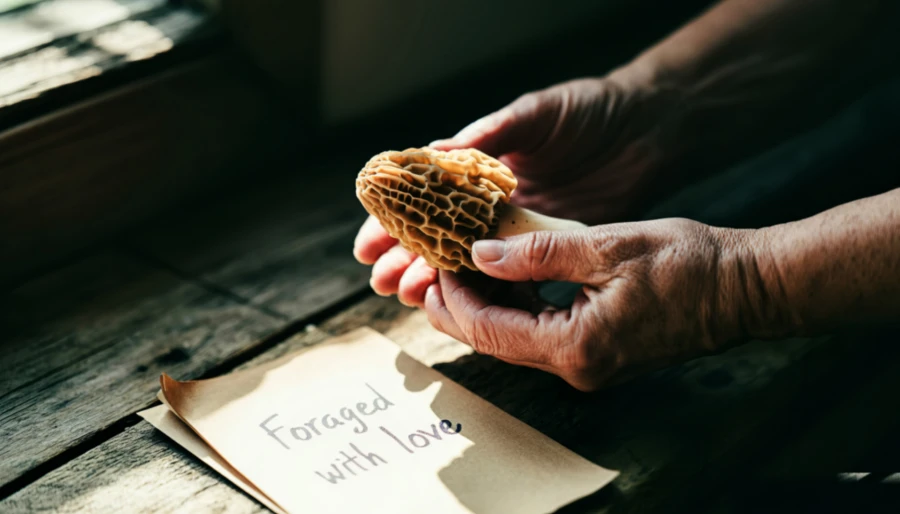Ah, fruitcake—the dessert that sparks love, hate, and countless jokes. But did you know that its rise to holiday fame owes a debt of gratitude to the US Postal Service?
Get ready to embark on a fruity adventure through time, sprinkled with fun facts about fruitcakes that’ll leave you craving a slice.
Legend has it that there’s only one fruitcake in the world, perpetually exchanged among people.
Even a renowned comedian like Johnny Carson couldn’t resist cracking a joke about it on the “Tonight Show.”
Fruitcakes have earned their reputation for longevity, with tales of friends in Iowa exchanging the same fruitcake since the 1950s and even a 1910 fruitcake left behind in Antarctica by explorer Robert Falcon Scott.
But the ultimate champion of endurance goes to a fruitcake baked way back in 1878, during the presidency of Rutherford B. Hayes.
And the surprising part?
These ancient fruitcakes are still edible! Thanks to a trifecta of sugar, low moisture ingredients, and some spirited assistance, fruitcakes can outlast just about anything.
But let’s journey further back in time, to the days of ancient Rome.
The Romans, always the ingenious ones, created a fruity energy bar to fuel their soldiers in battle. This early rendition of fruitcake consisted of a mash-up of barley, honey, wine, and dried fruit, including the occasional burst of pomegranate seeds. It was like the ancient world’s version of a power snack.
Fast-forward to the Middle Ages in Europe, where the familiar sight of a modern-style fruitcake first emerged. Moist, leavened, and adorned with delightful fruits and nuts, it became a sweet symbol of culinary sophistication.
The addition of aromatic spices like cinnamon, cloves, and nutmeg added an extra touch of magic.
Every culture had its own fruited bread or cake, paving the way for the fruitcake we know today.
Now, let’s take a detour to Europe, where fruitcakes take on different forms. European fruitcakes resemble the medieval fruited bread more closely than their British and American counterparts. Stollen and panettone steal the show in Europe, each with their unique twist.
But for sheer extravagance, the British take the cake—literally! Their rich fruitcakes are topped with a layer of marzipan icing, creating a heavenly treat fit for royalty.
When the European colonists made their way to America, they brought fruitcakes with them.
These cakes found a sweet spot in the New World, thanks to the abundance of cheap sugar from the Caribbean. Sugar became the key to preserving fruits, and the technique of candying fruit was born.
By boiling fruit in sugar syrup, tossing it in granulated sugar, and letting it dry, colonists could enjoy the flavors of summer well into the Christmas season. Fruitcakes became a beloved holiday dessert, cherished for their ability to stay fresh in an era before refrigeration.
But what’s the secret to a perfect fruitcake? It’s all about the art of seasoning.
Fruitcake aficionados will tell you that the best ones are aged and matured for at least three months. This process not only enhances the flavor, but also makes slicing a breeze.
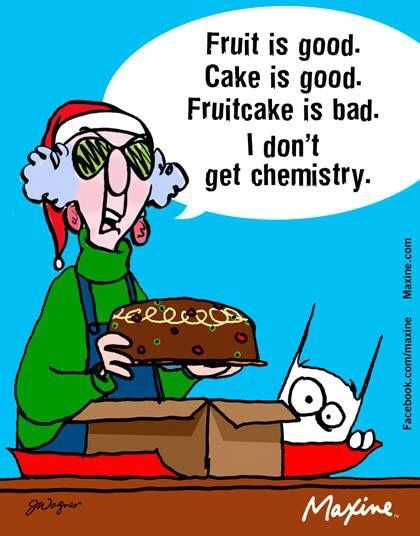
Seasoning involves brushing the fruitcake with your favorite distilled spirit, wrapping it tightly, and letting it rest in a cool, dark place for up to two months. Brandy, rum, or even bourbon in the American South—it’s all about infusing that extra bit of spirit into the cake.
A well-seasoned fruitcake gets several delightful spirit baths over its maturation period, making it a spirited companion.
Now, let’s raise a toast to the US Post Office! Rural Free Delivery in 1896 and the Parcel Post service in 1913 revolutionized mail-order foods in America.
Suddenly, rare delicacies were just a mail-order envelope away.
Fruitcakes, with their long shelf life and sturdy texture, were a natural fit for this booming business. That’s right, just like the misunderstood mistletoe, fruitcake was turned into a holiday icon with good marketing.
Companies like Claxton’s from Georgia and Collin Street from Texas capitalized on the mail-order frenzy.
Soon, fruitcake tins filled the mailrooms across the nation, bringing joy and laughter to the lucky recipients.
But as time passed, fruitcakes found themselves facing a love-hate relationship. In the 1950s, they were celebrated as an essential part of the American holiday tradition.
More To Discover
- The U.S. Forest Service’s Controversial Plan to Store Carbon Dioxide Under National Forests
- The Case Against Declawing Cats: Understanding the Disadvantages, Inhumanity, and Global Perspectives
- Decoding the 7 Types of Dog Food
- Why Are Michigan Orchards Leaving Apples on Trees In Winter? Money, of course.
A 1953 Los Angeles Times article deemed fruitcake a “holiday must,” and the Christian Science Monitor asked in 1958, “What could be a better gift than fruitcake?”
Yet, a survey in 1989 revealed that 75 percent of people considered fruitcake their least favorite gift.
But fear not, fruitcake enthusiasts!
The tradition lives on, with over 2 million fruitcakes still sold each year. It seems the love for this delightful dessert remains, no matter the jokes and skeptics.
So, next time you encounter a fruitcake, remember its incredible history and the laughter it has brought.
It’s a dessert with a storied past, surviving the test of time like a fruity superhero. And who knows?
Maybe that fruitcake you received could become a legendary one, passed down through generations, bringing joy, laughter, and a touch of sweetness to everyone it encounters.









